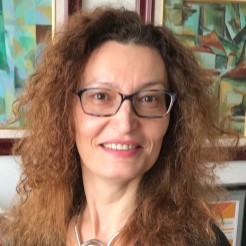Biography
Dr. Marzia Martina is the leader of the Electrophysiology Team within the Department of Translational Biosciences at the National Research Council of Canada. Her work focuses on the development of therapeutic antibodies targeting ion channels, as well as physiologically-relevant CNS models to evaluate therapeutics.
She holds a PhD in Human Physiology from the University of Milan where she investigated the modulatory effects of dopamine on HVA calcium channels in sensory neurons. She studied the physiological and networking properties of central and intercalated neurons in the amygdala at Laval University, Quebec City, during her postdoctoral fellowship and, before joining the NRC, she was Assistant Professor at the Department of Psychiatry (University of Ottawa) conducting electrophysiological studies on the effects of D-amino acids on NMDA receptor function.
Key words
Patch clamp (manual and automated), Multi-electrode arrays, iPSC derived neurons, engineered modified cell lines, brain slices
Most recent publications
- Ribecco-Lutkiewicz M., Sodja C., Haukenfrers J., Haqqani A.S., Ly D., Zachar P., Baumann E., Ball M., Rukhlova M., Martina M., Liu Q., Stanimirovic D., Jezierski A, Bani-Yaghoub M. (2018). A novel human induced pluripotent stem cell blood-brain barrier model: Applicability to study antibody-triggered receptor-mediated transcytosis. Scientific Reports 8:1873 | DOI:10.1038/s41598-018-19522-8.
- Tauskela J.S., Comas T., Hewitt M., Aylsworth A., Zhao X., Martina M., Costain W. (2016). Effect of synthetic cannabinoids on spontaneous neuronal activity: comparative evaluation using Ca2+ spiking and multi-electrode arrays. European Journal of Pharmacology, 786: 148-160; http://dx.doi.org/10.1016/j.ejphar.2016.05.038
- Martina M., Perkins M.N. (2015). Small molecules versus biologics: the quest for the ideal Nav1.7 inhibitor. Drug Target Review, 2(3): 34-37.
- Rennie K., Haukenfrers J., Ribecco-Lutkiewicz M., Ly D, Jezierski A, Smith B., Martina M., Gruslin A., Bani-Yaghoub M. (2013). Potential role of amniotic fluid-derived cells for treating the injured nervous system. Biochemistry and Cell Biology, 91(5):271-86; doi: 10.1139/bcb-2013-0019.
- Martina M., Comas T., Mealing G. (2013). Selective pharmacological modulation of pyramidal neurons and interneurons in the CA1 region of the hippocampus. Front. Neuropharmacol. 4:24. doi: 10.3389/fphar.2013.00024.
- Bowen C., DeBay B., Ewert S., Ilenchuk T.T., Lutes T., Martina M., Mealing G., Merkely N, Mareno M., Rice C., Syvitsky R., Uqbal U.,and Stewart J.M. (2013). In Vivo detection of human TRPV6-rich tumors with anti-cancer peptides derived from Soricidin. PLoS ONE 8(3):e58866. doi:10.1371/journal.pone.0058866.
Published book
Marzia Martina and Stefano Taverna (eds.), Patch-Clamp Methods and Protocols, Methods in Molecular Biology, vol. 1183, DOI 10.1007/978-1-4939-1096-0_2, © Springer Science + Business Media New York 2014.
